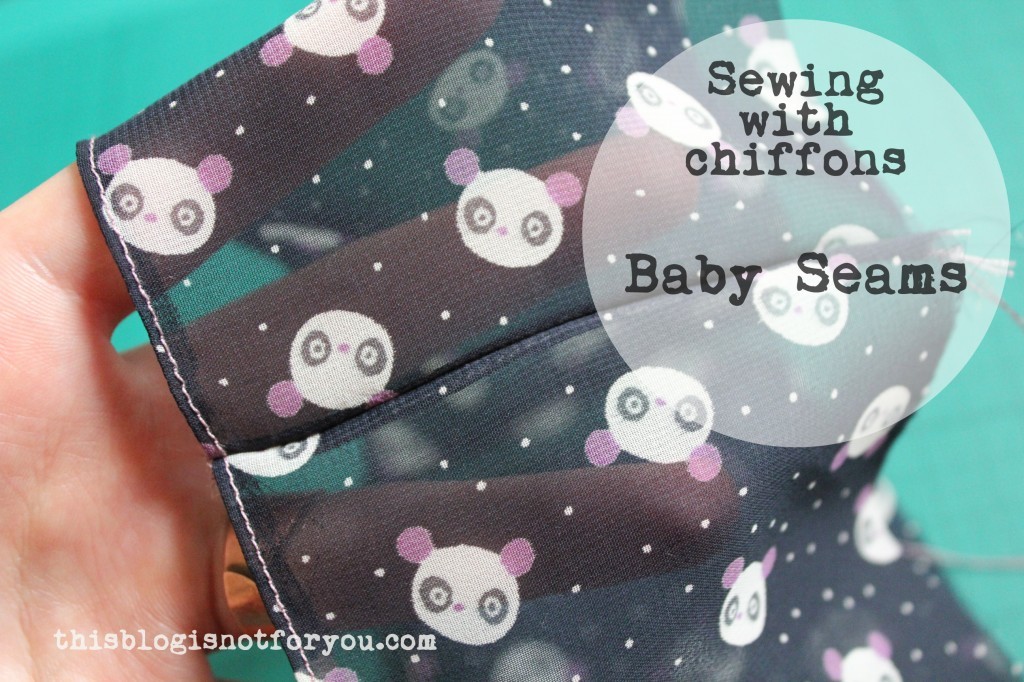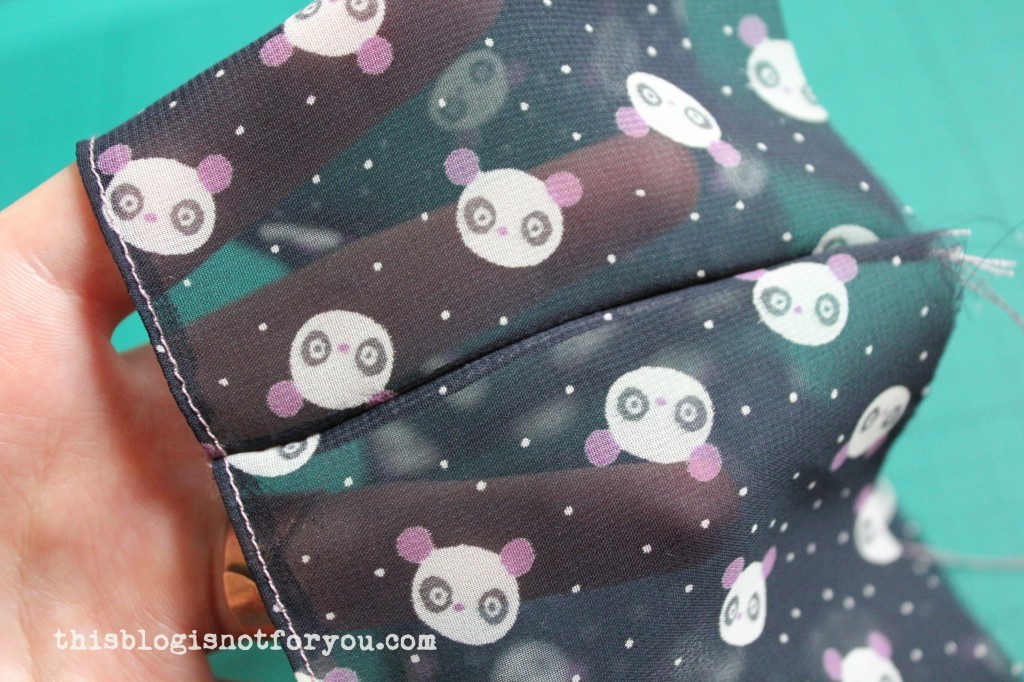 Hi everyone! It’s incredibly warm here in London at the moment, one of the reasons why I haven’t been sewing a lot lately.But the fridge loaded with ice cream and cool drinks, I finally got around to editing the pictures for the baby seams tut! So here it is!
Hi everyone! It’s incredibly warm here in London at the moment, one of the reasons why I haven’t been sewing a lot lately.But the fridge loaded with ice cream and cool drinks, I finally got around to editing the pictures for the baby seams tut! So here it is!
Baby seams, a specific seam finish, are particularly helpful when sewing with very lightweight and sheer fabrics, like chiffon. Bill Travilla, designer for many Hollywood actresses, used this technique for Marilyn Monroe famous white halter bodice dress from The Seven Year Itch.
When sewing with transparent fabrics, it’s often difficult to hide the raw edges of the seam. This technique perfectly hides the raw edges.
Step 1
You will need about 5/8 inch or 1.5 cm of seam allowance.(Less does also work if you already cut out your garment. But it’s easier to work with a bit more). Straight stitch 1/2 inch or 1.3 cm from the edge, right sides together.

When sewing with very lightweight fabrics like chiffon, there’s the risk that your machine eats the fabric by pulling the end of the seam into the needle hole. To prevent that from happening you can use a straight stitch foot. If you don’t have one, you can simply place a small piece of tissue paper under the end of the seam to give it a bit more strength (see picture above).
A straight stitch foot is quite inexpensive and very useful if you sew with lightweight fabrics like chiffons, silks or satins often.

The small hole keeps the fabric from being pulled into the needle hole. It also helps the fabric from sliding away when sewing. I just bought one (after sewing the panda blouse and I love it!) Just be careful with your machine settings. With this presser foot you can only use the straight stitch (the name says it all 😛 ). The needle might break if you accidentally set your machine to zigzag stitching.
Step 2

Fold the seam on the stitched seamline. Press it flat if you want to, it might help to keep things in place (I always prefer getting it done quickly…). Then edgestitch 1/16 inch or 1-2mm from the folded edge.




Hehe, see what happens if you don’t press it? The stiched line is not perfectly parallel to the other, but that’s only for the perfectionists.
Step 3
Now trim very closely to the edgestitching. Use your fabric scissors (I tried the cutter and accidentally cut into the seam. Not a good idea). Try to keep the scissors parallel to the fabric.

Step 4
Now fold the seam again so that the raw edges are enclosed and hidden. Edgestitch on top of the last stitching line.

Don’t get confused by this picture. I had turned the fabric 180 degrees, thats why the folded seam is facing in the wrong direction.
Step 5
Now you’re almost done. Just press the seam flat and start admiring how nice it looks!


I used this technique for all seams of the Panda Blouse. The above picture shows the peplum of one of the sleeves. I first edgestitched the hem and trimmed the raw edges, then sewed the side seams with the baby seam technique. After pressing the baby seams I folded the hem on the stitched line, enclosing the raw edges and edgestitched.

You can barely see the side seams in this picture -nice, eh? (Don’t look too closely though, I screwed up the hem at one point… :P)
I love this technique! I know you’re going to ask if it takes much longer than other seam finishes. NO, it doesn’t! You’re basically sewing the seams and the seam finish at once, so it’s not more complicated than other techniques. And since you’re straight stitching it’s much faster than finishing the raw edges with a zigzag or overlock stitch!
And seeing the results you’ll find it’s totally worth th effort!

Oh my gosh- I’m so excited for a couple reasons- I have that foot! I never knew what it was though. I got a few extra feet once at an estate sale but didn’t know what they were. I have this other weird one I’d like to show you & see if you can identify it!
Also, sewing with delicates is big on my to do list right now. First up is knits though, because I should really be able to sew a dang tshirt by now 🙂
Thanks for the tut- I pinned it…& I hope you show any other special feet you have & more tricks like the tissue paper- because I really don’t find stuff like that anywhere else!
thank youu:) I only recently found out (when shopping for some feet online) that I had a blind hem foot all along! Oh yes, please send me a pic or post it on my facebook site, I’d love to give it a try 😀
I’m also still struggling with knits a bit. Best is to start with simple refashions using old tshirts. Sewing in small inserts or adding ribbon and soon you’ll be the master of knits!